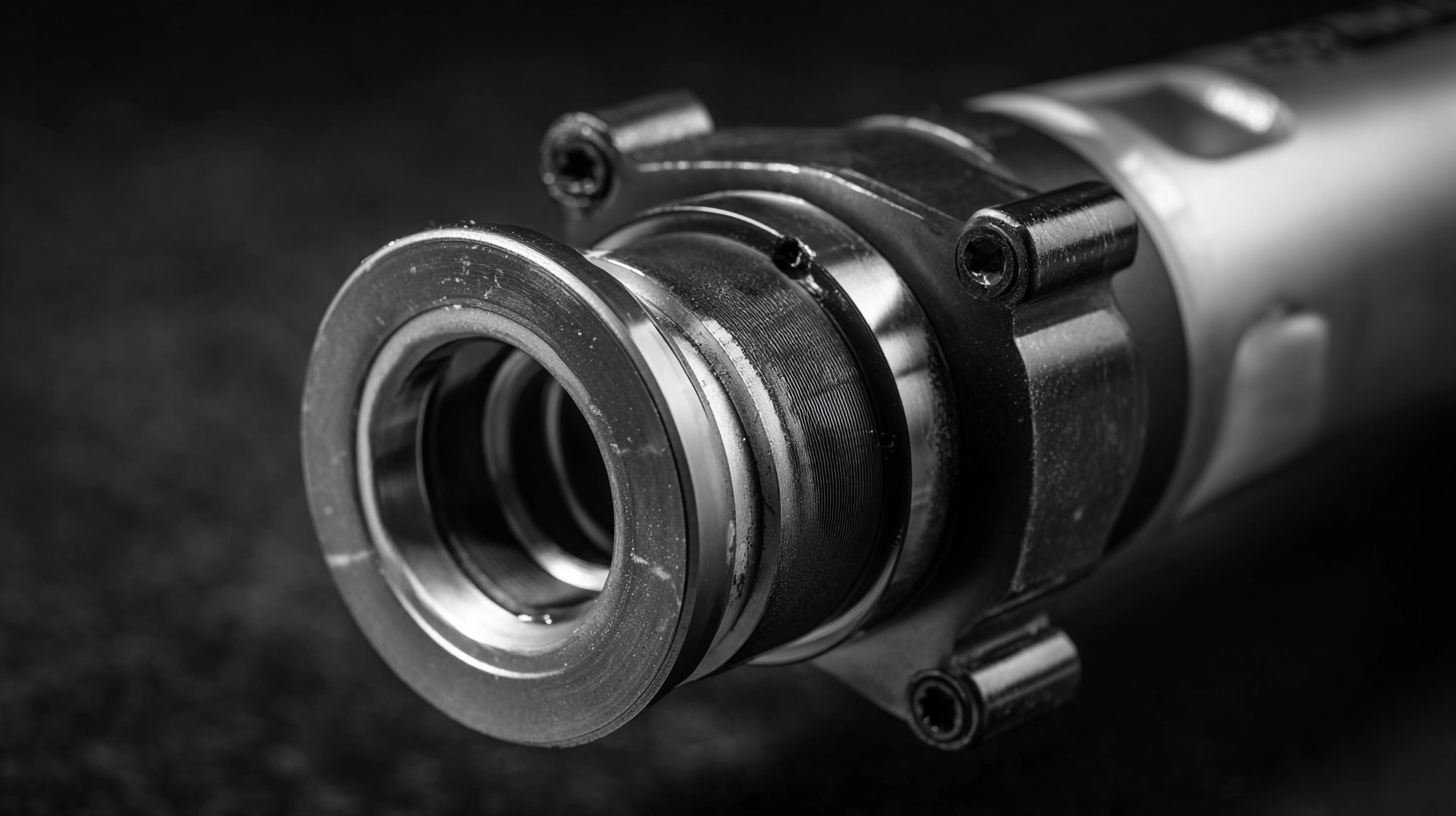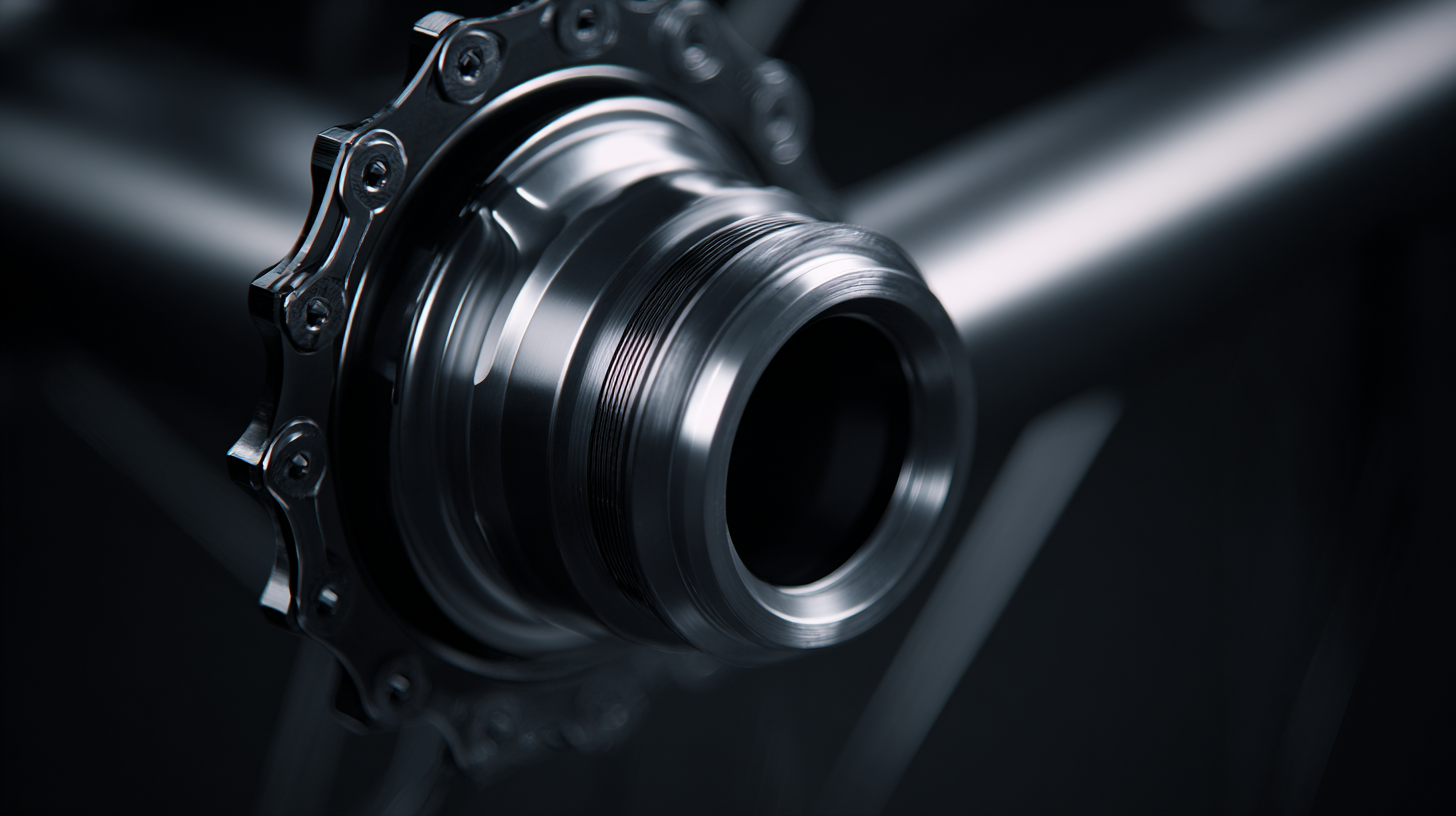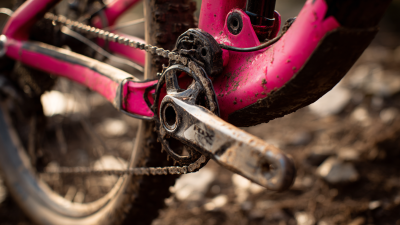Exploring the Advantages of Upgrading to the Latest Cartridge Bottom Bracket Technology
In recent years, the cycling industry has witnessed significant advancements in technology, particularly in the realm of the cartridge bottom bracket. A comprehensive study by the International Cycling Union reveals that nearly 65% of competitive cyclists are now opting for the latest cartridge designs, which promise enhanced performance and durability. Upgrading to modern cartridge bottom bracket technology not only increases pedal efficiency by an average of 10%, but also reduces maintenance frequency, as indicated by findings from the Bicycle Product Suppliers Association. Furthermore, with innovations such as improved sealing systems and materials, the longevity of these components has dramatically increased, ensuring smoother rides and better power transfer. This guide explores the myriad advantages of migrating to the most recent cartridge bottom bracket technology, positioning you to make an informed decision that aligns with both performance goals and maintenance efficiency in your cycling pursuits.

Understanding the Basics of Cartridge Bottom Bracket Technology
Cartridge bottom bracket technology represents a significant advancement in bicycle engineering, offering improved performance and longevity compared to traditional systems. At its core, a cartridge bottom bracket is a sealed unit that houses the bearings within a single, compact assembly. This design minimizes the exposure of the internal components to dirt and moisture, thereby extending the lifespan of the bearings substantially. According to a study by the Cycling Industry Club, cartridge bottom brackets can last up to 50% longer than their traditional counterparts, which often suffer from wear and degradation due to environmental factors.
Furthermore, the ease of installation and maintenance associated with cartridge systems adds to their appeal. With most designs utilizing a proprietary tool for installation, even amateur cyclists can replace or upgrade their bottom brackets with minimal hassle. Industry experts note that bikes equipped with cartridge bottom brackets not only offer a smoother ride but also enhance overall drivetrain efficiency by reducing friction. Research conducted by BikeRadar supports this claim, indicating that the right bottom bracket configuration can lead to up to a 10% improvement in pedaling efficiency under optimal conditions. As cycling enthusiasts seek reliable, high-performance upgrades, understanding the fundamentals of cartridge bottom bracket technology becomes essential for maximizing their riding experience.
Identifying the Key Benefits of Upgrading to the Latest Technology
Upgrading to the latest cartridge bottom bracket technology offers several significant benefits that can enhance your cycling experience. First and foremost, modern cartridge systems are designed for improved durability and performance. With advancements in materials and engineering, these bottom brackets resist wear and tear more effectively than their predecessors. This means that cyclists can enjoy smoother rides with less maintenance, reducing the frequency of replacements and associated costs.

Another key advantage is the weight reduction that comes with newer designs. The latest technology often utilizes lightweight materials without compromising strength, leading to an overall lighter bike. This is particularly beneficial for competitive cyclists who need every ounce of efficiency in their performance. Additionally, many contemporary cartridge systems offer better sealing against dirt and moisture, which extends their lifespan and reliability, allowing riders to tackle diverse terrains with confidence.
Embracing this technology not only upgrades the bike's capabilities but also contributes to a more enjoyable and hassle-free riding experience.
Step-by-Step Guide to Choosing the Right Cartridge Bottom Bracket
When choosing the right cartridge bottom bracket, the first step is to determine the compatibility with your bike's frame and crankset. It’s essential to check the specifications of your bike, particularly the shell width and thread type. Most modern bikes will require either a threaded or press-fit cartridge, so understanding these details will help you narrow down your options effectively.
Next, consider the material and construction of the bottom bracket. High-quality materials like aluminum and steel can enhance durability and performance. Additionally, look for features such as sealed bearings that protect against dirt and moisture, which can significantly extend the life of your bottom bracket. Pay attention to the weight as well; lightweight models can improve the overall performance of your bike without compromising strength. By assessing these factors, you can select a cartridge bottom bracket that aligns with your cycling needs and preferences.
Installation Tips for Maximizing Performance Post-Upgrade
Upgrading to the latest cartridge bottom bracket technology can significantly enhance cycling performance, but proper installation is key to maximizing these advantages. According to industry reports, modern cartridge systems typically offer improved sealing and durability, reducing the likelihood of contamination from dirt and water. This can lead to a smoother pedal stroke and increased overall drivetrain efficiency, with studies indicating that properly installed bottom brackets can improve power transfer by up to 10%.
When it comes to installation, there are several critical tips to keep in mind. First, ensure that the frame's threaded interfaces are clean and free of debris; even small particles can compromise the fit and lead to performance issues. The use of a torque wrench is crucial for applying the correct amount of pressure, as both under-tightening and over-tightening can cause damage to the components. Additionally, lubricate your threads and seals adequately to ensure a proper seal and prevent premature wear. Implementing these strategies can help cyclists fully realize the benefits of their upgraded bottom brackets and maintain peak performance over time.
Maintenance Practices to Enhance the Longevity of Your Cartridge Bottom Bracket
 Maintaining your cartridge bottom bracket is essential for ensuring optimal performance and longevity. Regular maintenance can prevent wear and tear, keeping your bike in top shape. One key practice is to clean the area around the bottom bracket frequently. Dirt and grime can infiltrate the sealed components, causing friction and degradation. Use a gentle cleaner and a microfiber cloth to keep it spotless.
Maintaining your cartridge bottom bracket is essential for ensuring optimal performance and longevity. Regular maintenance can prevent wear and tear, keeping your bike in top shape. One key practice is to clean the area around the bottom bracket frequently. Dirt and grime can infiltrate the sealed components, causing friction and degradation. Use a gentle cleaner and a microfiber cloth to keep it spotless.
Tips to extend the life of your bottom bracket include checking for play in the crankset regularly. If you notice any looseness, it may indicate that you need to tighten the bottom bracket or replace it. Additionally, consider applying a small amount of grease to the threads during installation. This will help to prevent corrosion and make future removals much easier.
Another practice to enhance durability is to avoid exposing your bike to extreme conditions. If you often ride in wet or muddy environments, invest in a splash guard to keep debris from accumulating in the bracket area. Also, be mindful of how you wash your bike; using high-pressure water can force water and contaminants into the bottom bracket shell. By adopting these maintenance habits, you can ensure that your cartridge bottom bracket remains functional and reliable for many miles of cycling.
This website uses cookies to ensure you get the best experience possible. Learn more.
